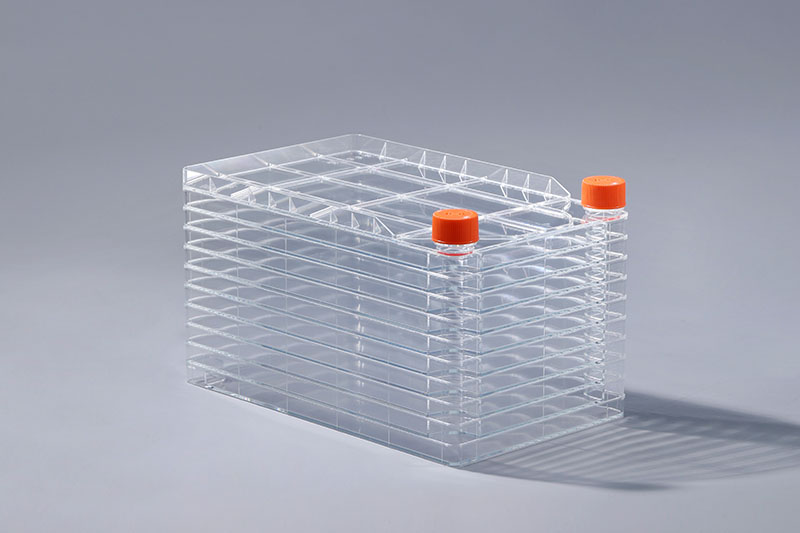대규모 세포 배양에서 cell factory은 일반적으로 사용되는 소모품으로 주로 부착 세포의 배양에 사용됩니다. 세포 성장에는 다양한 영양소가 필요합니다. 그럼 그 영양소는 무엇인가요?
1. 배양 배지
세포 배양 배지는 탄수화물, 아미노산, 무기염, 비타민 등을 포함하여 성장에 필요한 영양소를 세포 공장의 세포에 제공합니다. 다양한 세포의 영양 요구에 따라 다양한 합성 물질이 있습니다 EBSS, Eagle, MEM, RPMll640, DMEM 등과 같은 미디어를 선택할 수 있습니다.
2. 기타 첨가물
다양한 합성배지에서 제공하는 기본영양소 외에 혈청, 인자 등의 기타 성분은 세포 및 배양 목적에 따라 첨가되어야 합니다.
세럼은 세포외기질과 같은 중요한 물질을 제공합니다. , 성장인자 및 트랜스페린, 소태아혈청이 일반적으로 사용된다. 첨가되는 혈청의 비율은 다른 세포와 다른 연구 목적에 따라 결정되어야 합니다. 10%~20% 혈청은 성장 배지라고 하는 세포의 빠른 성장과 증식 속도를 유지할 수 있습니다. 세포의 느린 성장 또는 불멸성을 유지하기 위해 2%~5%의 혈청을 첨가할 수 있으며 이를 유지 배지라고 합니다.
글루타민은 세포 성장에 중요한 질소 공급원이며 세포 성장 과정에서 중요한 역할을 합니다 그리고 신진대사. 그러나 글루타민은 매우 불안정하고 용액에서 쉽게 분해되기 때문에 4°C에서 7일 후에 글루타민의 약 50%가 분해될 수 있습니다. 아미노 아미드는 사용 전에 첨가해야 합니다.
일반적으로 세포 배양에는 다양한 배지와 혈청을 사용하지만 배양 중 세포 오염을 방지하기 위해 페니실린, 스트렙토마이신, 겐타마이신, 등도 배양 배지에 첨가된다.
The FAI climbed 5.9 percent year-on-year in the first 11 months of 2018, quickening from the 5.7-percent growth in Jan-Oct, the National Bureau of Statistics (NBS) said Friday in an online statement.
The key indicator of investment, dubbed a major growth driver, hit the bottom in August and has since started to rebound steadily.
In the face of emerging economic challenges home and abroad, China has stepped up efforts to stabilize investment, in particular rolling out measures to motivate private investors and channel funds into infrastructure.
Friday's data showed private investment, accounting for more than 60 percent of the total FAI, expanded by a brisk 8.7 percent.
NBS spokesperson Mao Shengyong said funds into weak economic links registered rapid increases as investment in environmental protection and agriculture jumped 42 percent and 12.5 percent respectively, much faster than the average.
In breakdown, investment in high-tech and equipment manufacturing remained vigorous with 16.1-percent and 11.6-percent increases respectively in the first 11 months. Infrastructure investment gained 3.7 percent, staying flat. Investment in property development rose 9.7 percent, also unchanged.
 English
English



















































